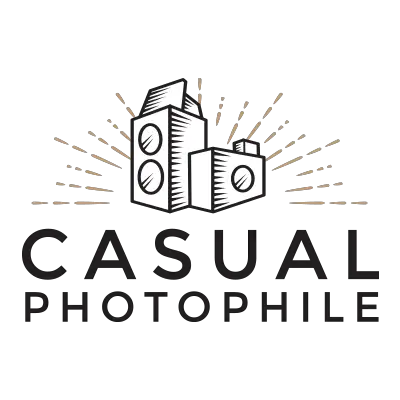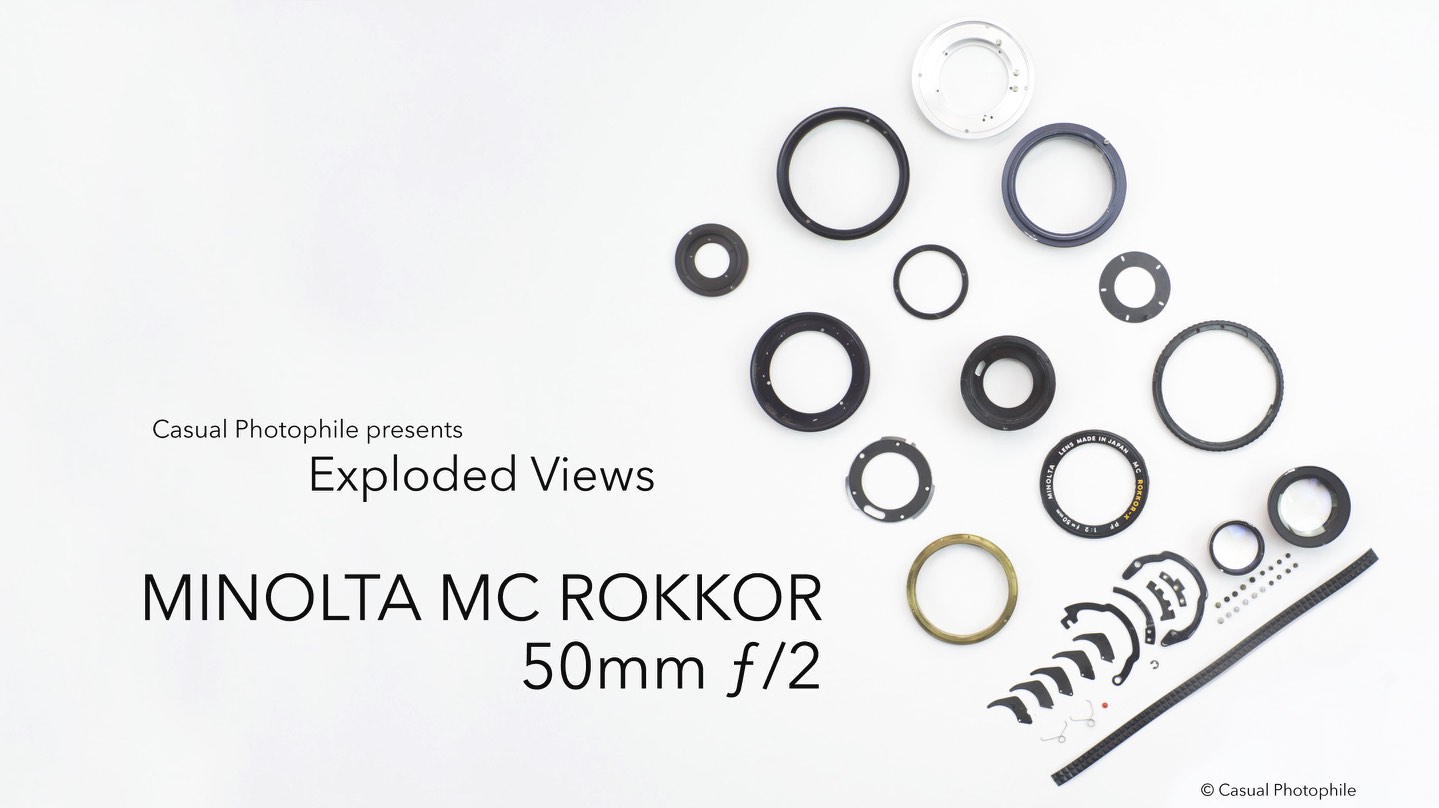Here’s another installment in our Exploded Views feature. Last time we featured the Canon AE-1, and this week we’re showcasing something that’s admittedly simpler, less jaw-dropping, and easier on our bleeding fingertips.
It’s Minolta’s MC Rokkor 50mm ƒ/2, and while it’s not the sexiest lens in the world it’s still a perfectly respectable and fiscally practical choice. It also happens to be pretty interesting to look at when disassembled and splayed across a white slab.
To see the guts of this piece of glass, read on.
Sure, this exploded view isn’t as complicated or visually impactful as the AE-1 we disassembled last week, but it’s still worth a look, especially for those who may have never seen an aperture blade separated from its housing.
Here above and below we can see the disassembled iris assembly, with its aperture blades, blade holder, and actuating arm. Also visible is the essential red dot used to align the lens for mounting on the body. Hi-tech stuff.
In the following shot we can see the exceedingly fine threads of the outer ring of the focusing helicoid. These beautiful brass threads mesh with a mating set of corresponding threads on the inner lens barrel, and rotate when the photographer spins the focus ring. This rotational movement is converted by these threads into linear movement, which increases or decreases the distance of the lens groups relative to one another and allows resolution of objects at different distances from the lens.
Sounds boring, but without this rather simple looking invention all cameras and lenses would still use expanding bellows mounted on a system of tracks to focus. Be thankful.
Next we can see two similarly simple components that combine to endow many lenses with their most useful feature. These are the distance scale seen on the left and the focus scale seen on the right. While these simple markings may not look very important, their inclusion or exclusion means quite a lot to the functional practicality of any given lens.
Zone focusing is one of the most useful techniques in many photographers’ creative arsenals. For street photographers, action shooters, and anyone else who needs to focus in a hurry, these little dabs of paint on the lens barrel are among the most crucial components of a lens.
By using these scales it’s possible for a photographer to quickly and easily achieve tack-sharp focus, even in situations in which looking through the viewfinder is a practical impossibility. We discussed the technique in this article. Give it a read.
You’d think such a useful feature would be standard equipment on every lens, but that’s not the case. For some people, lack of a focus scale is a deal-breaker (understandably so).
Last but not least are, of course, the lens elements and groups. Six elements in five groups combine to make one of the best performing lenses for the money. This modestly priced lens offers outstanding sharpness to rival any lens on the market while often costing less than $30. Pretty amazing.
Here they’re casually used for some fun perspective control.
Fun stuff. Nothing too complicated, but that’s what makes this a great lens. It costs next to nothing and gives amazing value for money. It’s simple to take apart if there’s ever a problem, and if you drop it, hey, what’s the big deal?
If you want a super-sharp lens that won’t break the bank, give it a try. You’re not risking much, and we’ll bet you’ll love it.
Follow Casual Photophile on Facebook and Instagram
[Some of the links in this article will direct users to our affiliates at B&H Photo, Amazon, and eBay. By purchasing anything using these links, Casual Photophile may receive a small commission at no additional charge to you. This helps Casual Photophile produce the content we produce. Many thanks for your support.]









Really enjoying these type’s of articles, really interesting. Hope you keep doing them.